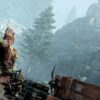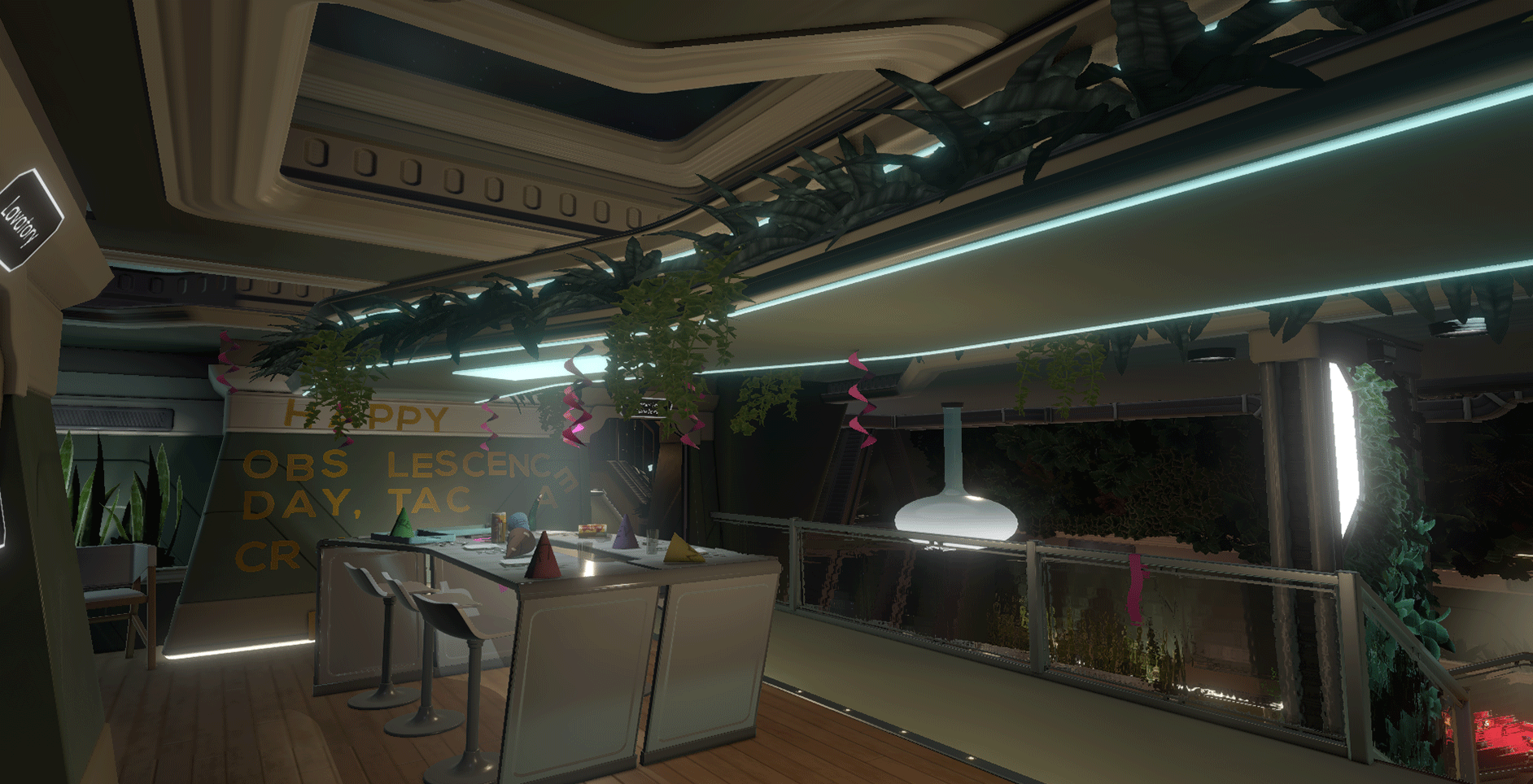Fullbright’s Gone Home was one that drifted well below my radar when it originally released. It wasn’t until the hysteria died down years later, after its release on home consoles, that I found myself wandering the halls of this beautiful, mysterious Oregon home. I remember being unsure of my aim but enamoured by the sense that the Greenbriar home was a real, lived-in place.
Tacoma fails to recapture that initial intrigue Gone Home had, perhaps because we’re aware of Fullbright’s work now. But that doesn’t make the game’s story any less impactful. You walk and, sometimes, float through Tacoma’s eponymous space station as sub-contractor Amy Ferrier, assigned by the station’s parent company Venturis to collect data and retrieve the ship’s A.I. unit, ODIN.
But this isn’t Amy’s story, she’s merely the vehicle in which we experience the real story at play. The relationships of Tacoma’s six-person strong crew, those both onboard and back on-world, as they find themselves in a dire situation following a meteor impact.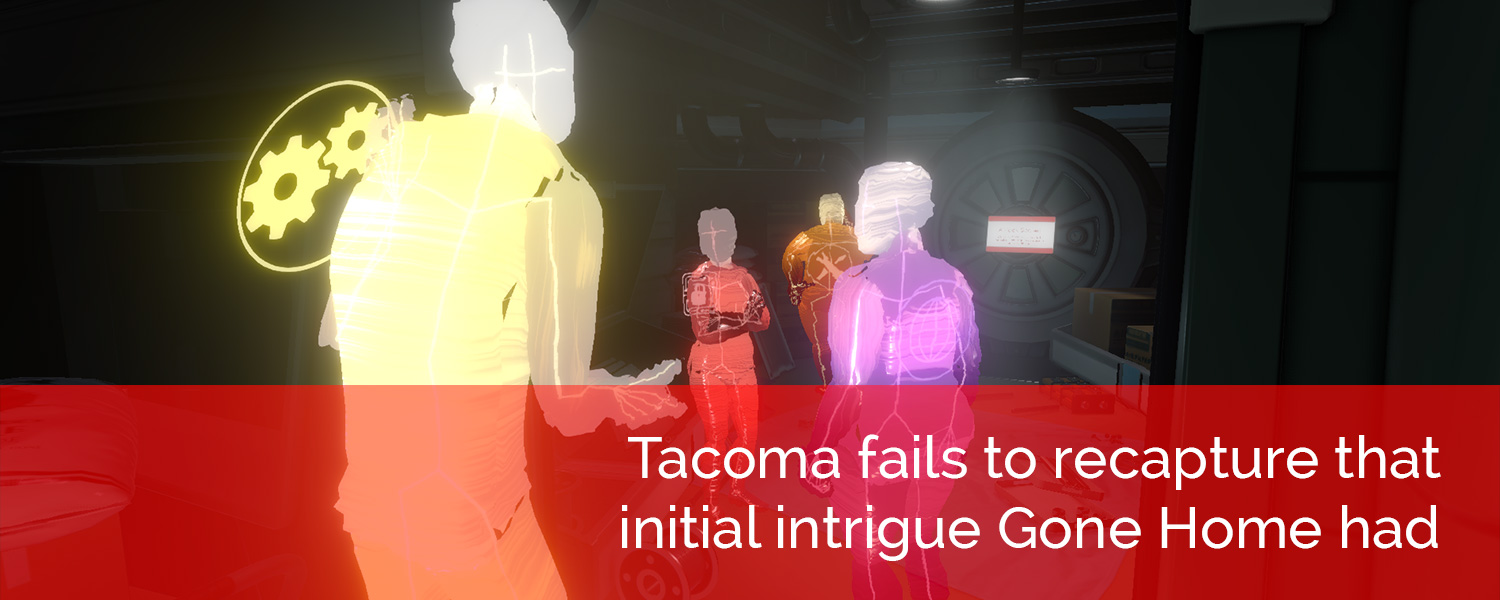 Fullbright’s secret weapon is its characters. The same is true of Gone Home, but Tacoma’s cast is a brilliantly realised bunch who, though we only spend a brief handful of hours with them, leave a lasting impression. There’s real heart, soul and you honestly ache as their hope begins to diminish at the prospect of their looming mortality. Gone Home really only touched on Sam and Lonnie’s romance, whereas Tacoma spreads its attention across its seven core characters. As a result, each character’s arc perhaps isn’t as deep as in Fullbright’s debut, though they’re each relatable and believable.
Fullbright’s secret weapon is its characters. The same is true of Gone Home, but Tacoma’s cast is a brilliantly realised bunch who, though we only spend a brief handful of hours with them, leave a lasting impression. There’s real heart, soul and you honestly ache as their hope begins to diminish at the prospect of their looming mortality. Gone Home really only touched on Sam and Lonnie’s romance, whereas Tacoma spreads its attention across its seven core characters. As a result, each character’s arc perhaps isn’t as deep as in Fullbright’s debut, though they’re each relatable and believable.
On the whole, I do think Tacoma’s story is more enjoyable than Gone Home, simply because I feel like it actually has a beginning, middle and end. I think it’s somewhat fair to say Gone Home lacked some of the linearity and pacing needed to tell a great story in this medium, while Tacoma is wiser about coercing the player in the right direction.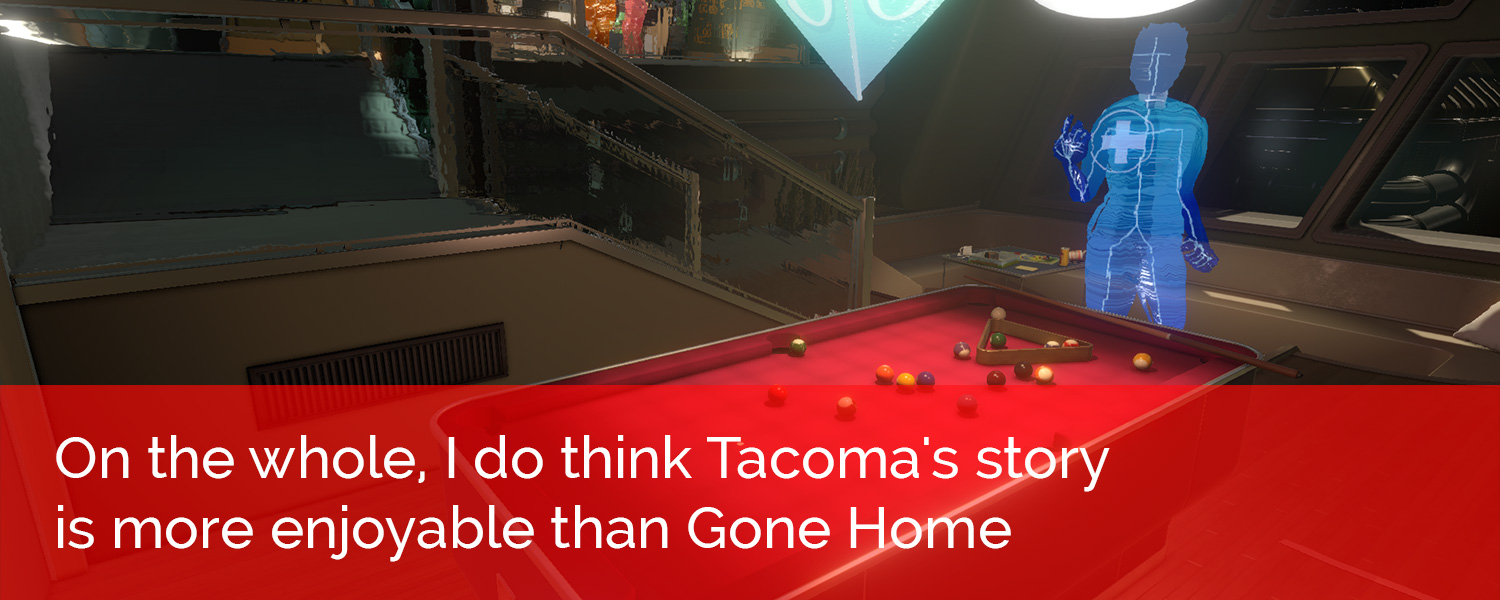 Gone Home relied on player’s rummaging through drawers and finding notes to further the game’s plot and unlock Sam’s diary entries. Although Tacoma, likes its predecessor, is very much a game about exploration, it arms its player-character with an augmented-reality device which grants her the ability to review the recorded actions of the station’s once-present crew. Amy can also be present for conversations, the most gripping of which are the private ones characters have with ODIN. They act as a window into their minds as they continue to deal with the gravity of their situation, so many miles from home.
Gone Home relied on player’s rummaging through drawers and finding notes to further the game’s plot and unlock Sam’s diary entries. Although Tacoma, likes its predecessor, is very much a game about exploration, it arms its player-character with an augmented-reality device which grants her the ability to review the recorded actions of the station’s once-present crew. Amy can also be present for conversations, the most gripping of which are the private ones characters have with ODIN. They act as a window into their minds as they continue to deal with the gravity of their situation, so many miles from home.
Using this device, you’ll be able to happen upon clues to help you progress throughout Tacoma’s vast facilities, such as sifting through often slightly-corrupted messages between the crew and even opportunistically observe the input of door codes. It’s a neat and simplistic design that doesn’t get in the way of Fullbright’s natural strength of storytelling.
Unlike the Greenbriar residence, Venturis clearly favoured clean, sleek futuristic decor for their Tacoma habitat. It is 2088 after all. The game’s bright, lush aesthetic is a stark contrast to its bleak, doomsayer tone, which helps in maintaining a dreadful tension as the story’s mysteries unravel. The almost wire-frame, colour-coded models that represent each crew member is certainly charming and add a splash of colour against the station’s very clinical, white backdrop. No crew member is alike either, as Fullbright further adds to their reputation of developing really inclusive games catering to all demographics. There’s a whole diverse range of body types, races and sexualities mixed throughout Tacoma’s cast, and that can only be seen as another step in the right direction.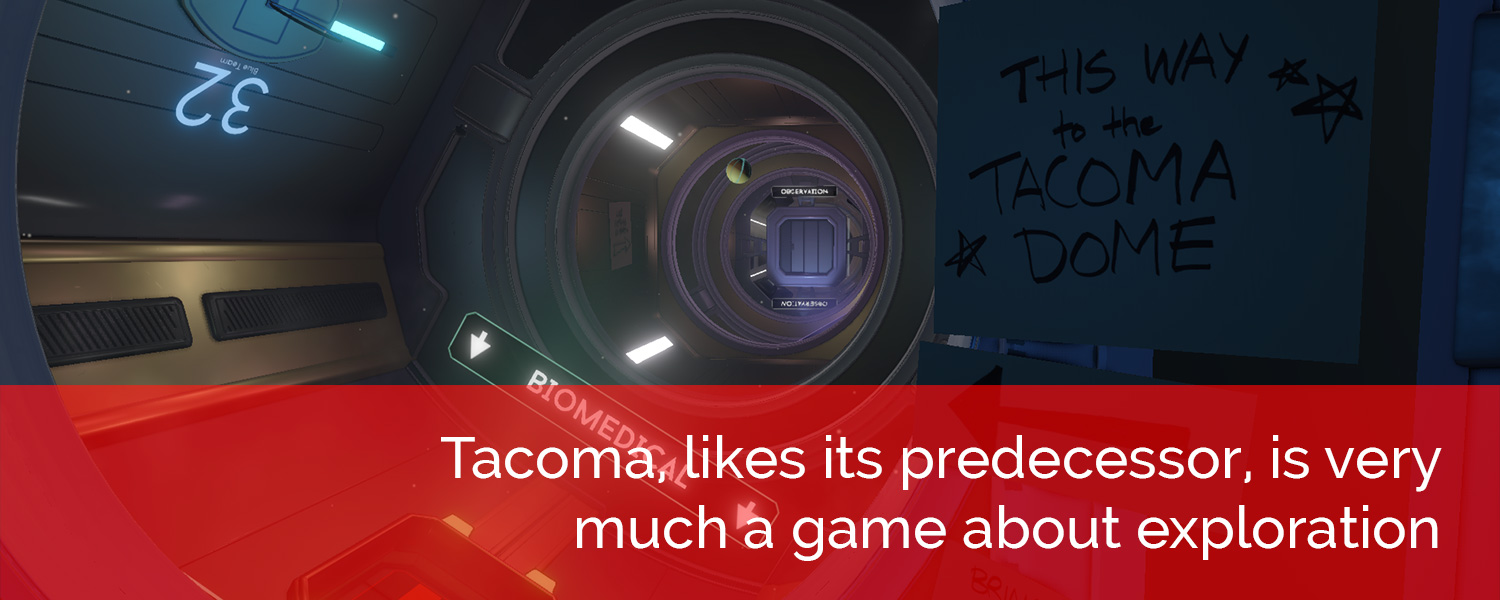 The same statement could also apply to the game’s voice actors, who sound as though they come from all over the globe. There’s even a talented Australian engineer among the crew, so that’s neat. All of Tacoma’s cast does a wonderful job of bringing their characters to life, from the pain in one character’s voice when they’re knowingly misleading another naive colleague to the terrifically ambiguous A.I. ODIN, whose arc stands out to me as the game’s most resonant.
The same statement could also apply to the game’s voice actors, who sound as though they come from all over the globe. There’s even a talented Australian engineer among the crew, so that’s neat. All of Tacoma’s cast does a wonderful job of bringing their characters to life, from the pain in one character’s voice when they’re knowingly misleading another naive colleague to the terrifically ambiguous A.I. ODIN, whose arc stands out to me as the game’s most resonant.
The only gripe I have with Tacoma’s performance come during the game’s poorly disguised ‘loading screens’, where Amy transfers between wings on board the Tacoma. There’s a jarring amount of slowdown during these infrequent transfers, and the sheer length of them makes me wonder just how big this damn station is. Having gazed at parts of it through the ship’s windows, I’d have to say it hides it well.

